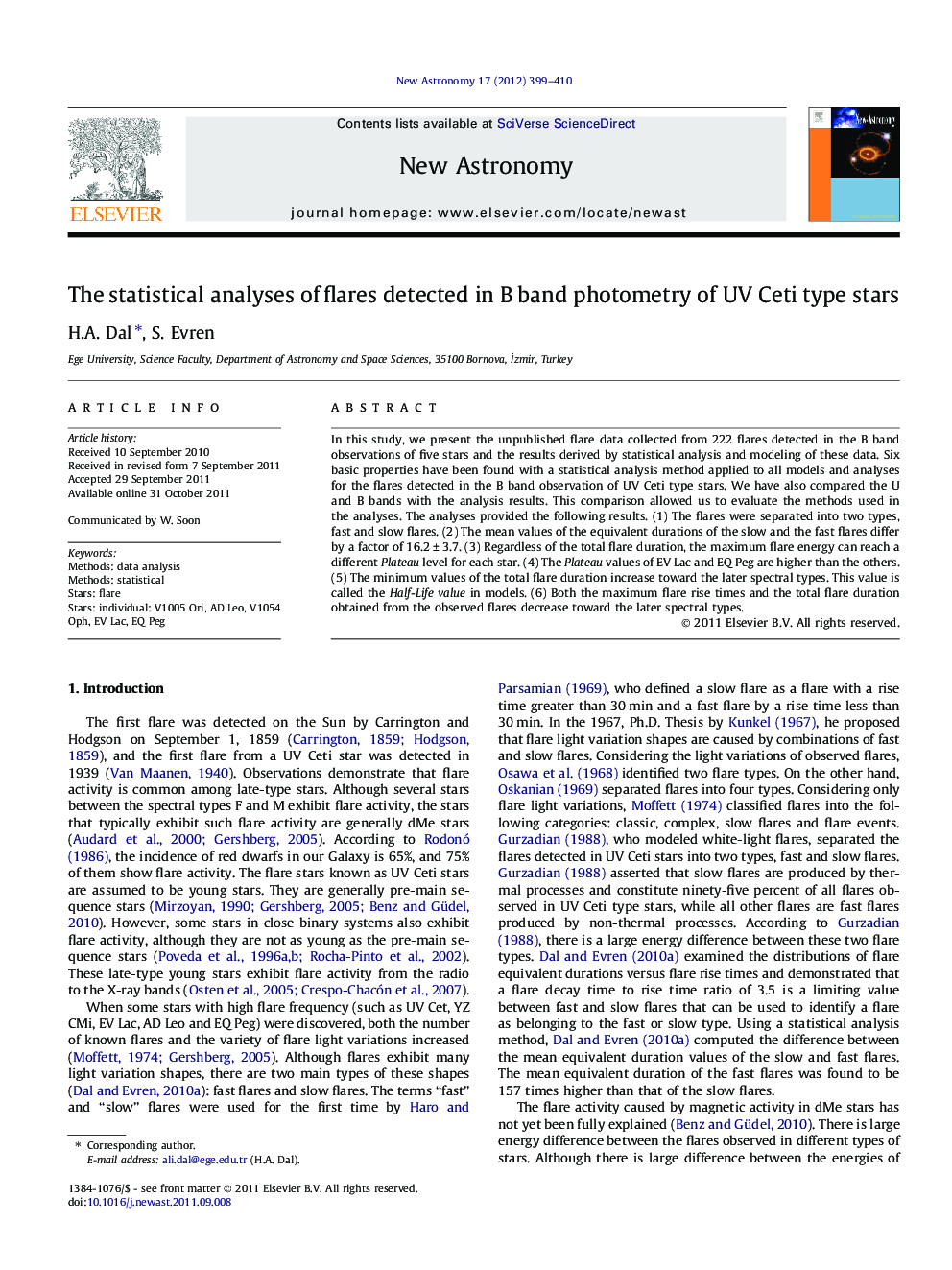| Article ID | Journal | Published Year | Pages | File Type |
|---|---|---|---|---|
| 1779284 | New Astronomy | 2012 | 12 Pages |
In this study, we present the unpublished flare data collected from 222 flares detected in the B band observations of five stars and the results derived by statistical analysis and modeling of these data. Six basic properties have been found with a statistical analysis method applied to all models and analyses for the flares detected in the B band observation of UV Ceti type stars. We have also compared the U and B bands with the analysis results. This comparison allowed us to evaluate the methods used in the analyses. The analyses provided the following results. (1) The flares were separated into two types, fast and slow flares. (2) The mean values of the equivalent durations of the slow and the fast flares differ by a factor of 16.2 ± 3.7. (3) Regardless of the total flare duration, the maximum flare energy can reach a different Plateau level for each star. (4) The Plateau values of EV Lac and EQ Peg are higher than the others. (5) The minimum values of the total flare duration increase toward the later spectral types. This value is called the Half-Life value in models. (6) Both the maximum flare rise times and the total flare duration obtained from the observed flares decrease toward the later spectral types.
► We observed five UV Ceti stars in the B band. ► 222 Flares were detected. Using the t-Test, we classified the flares as the fast and the slow flares. ► Using the OPEA function, the flares were modelled, and some parameters were derived. ► The variations of these parameters versus spectral types were examined. ► We found that these parameters are varying along the spectral types.
